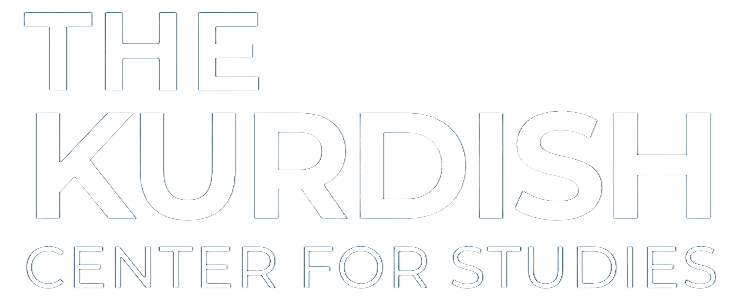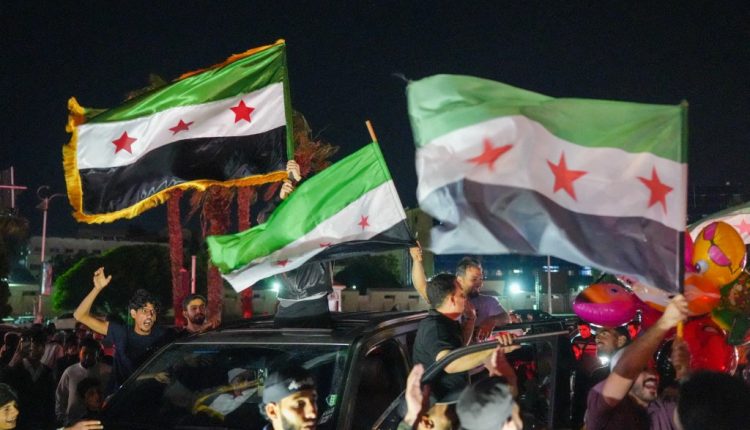A Functional Group That Defines Syrian Nationalism
By Tariq Hemo
At the top of the many priorities of the authority in Damascus (led by Hay’at Tahrir al-Sham, as it should always be reminded) is the narrative of “extending the state’s control over all areas of the country.” This means that the government/state, through security forces and factions that comprise the “Syrian regular army,” must control the peripheries and eliminate all manifestations of local self-administration by the components of these peripheral areas.
The authority, supported and reinforced by Arab media, continues to demonize and criminalize all voices rejecting its factions—those that highlight the true nature and essence of these factions and condemn the horrific violations they have committed and are currently committing in the areas they have expanded into. The authority and its media describe Syrians who oppose the rule of its obscurantist and extremist factions as “separatists,” and they consider the weapons these groups used to defend themselves throughout the years of the civil war as “weapons outside the framework of the state,” which the authority reduces solely to itself: HTS, its factions, militants, and foreign commanders.
There is a need to dissect the discourse of the HTS authority and to probe its subconscious mind to reveal what it truly has planned for Syria, land and people. (Some of this has become evident in recent months.) These plans and programs involve making massive changes and displacements, demolitions and demographic erasures, that aim to reshape the Syrian fabric, ultimately leading to the formation of a new state with a new identity and composition. This would result in a definitive break with the old Syria that we and the world have known for many decades.
First: The authority clings to the fallacy of viewing itself as the state, the capital, and the center, while considering the peripheries as margins. It insists on seeing the “de facto” situation in which the peripheral areas live as temporary, contingent, and inauthentic, thus outside the national framework. Meanwhile, it perceives itself as the enduring state and authority—whose figures, ideology, and armed manifestations represent the entirety, foundation, and origin of Syria. In this context, the authority seizes the concept, feeling, and privilege of “Syrian patriotism” and makes it exclusive to itself. It positions the sectarian faction from one of the peripheral regions as the state simply because it seized power through brute force and displaced the previous regime from the seat of authority in the capital. This approach is highly centralized, exclusionary, and rooted in totalitarianism and authoritarianism.
Second: The authority continues to erase all traces of the Syrian opposition political history. It refuses to recognize the existence of opposition political parties, forces, and national political figures who fought against the previous regime, paid enormous costs, and sacrificed greatly when faced with repression, abuse, and betrayal by the former regime. The current authority aims to obliterate this history and this legacy of resistance from the minds, consciousness, and realities of Syrians by banning and prohibiting political parties. It perceives trans-sectarian and trans-national political forces and parties based on Syrian patriotism as threats and obstacles to enforcing its anti-Syrian patriotic vision, one rooted in an extremist takfiri sectarian ideology. It does not want political parties or forces that unite all Syrians solely on a national basis. Instead, it seeks to entrench a distorted and fabricated quota system that divides Syrians into a majority aligned with itself and minorities it seeks to represent, by granting some of its figures positions, assignments, and privileges here or there.
Third: The new authority attempts to reduce Syria’s diversity to a single sect, constraining this sect within the scope of the strict interpretation it promotes and enforces. It is also preoccupied with “cleansing” the geographical space of the Syrian presence outside the “sect of power,” as well as “purging” the sect itself of Levantine thought or heritage that opposes the authority’s interpretation and its strict takfiri approach. Clearly, the authority is betting on time to consolidate its ideology and its interpretation of Sunni Islam, marginalizing any other interpretations in order to tighten its grip on the Syrian Sunni majority. This strategy seeks to legitimize its claims to represent the majority by confiscating this sect, silencing dissenting voices, and suppressing deeply rooted traditional currents that reject its visions and ideology, insisting instead on maintaining the identity and uniqueness of Levantine Sunni Islam.
Fourth: The authority resorts to “uncontrolled factions” when it seeks to discipline opponents among Syrians of different sects, regions, or political affiliations. It employs these factions and assigns them “dirty tasks,” such as committing massacres and violations — as occurred in the coast against the Alawite community, and more recently in Jaramana, Sahnaya, and Suwayda against the Druze community. These “uncontrolled factions” serve the goal of “disciplining” opponents from non-Sunni sects (currently Alawites and Druze) and from peripheral administrative areas (the coast and Suwayda). Afterwards, they disavow their crimes (despite praising the mobilization against the Alawites of the coast) and conceal the evidence of these atrocities through “investigation committees” tasked with “truth-finding.” These committees give promises of justice and redress, but delay publishing their reports month after month, betting on time and the eventual fading of the crimes, so they become a thing of the past and are forgotten.
Fifth: The authority is betting on the masses of those who are systematically kept ignorant and filled with religious, sectarian, and nationalist racism, to be used in the process of “cleansing” the interior regions (in the old/new interpretation: “Useful Syria”) of any presence of non-Sunni Syrian components. A fabricated incident involving a Druze cleric insulting the Prophet Muhammad was used as the pretext to launch a sectarian cleansing campaign against the Druze. The mob then went on a rampage, attacking Druze-majority neighborhoods in Damascus, killing dozens of innocent people, and mistreating Druze students in universities across the country. This effectively ensured the success of the sectarian division and cleansing process by driving Druze students to leave universities in the interior and relocate to their villages in the Sweida governorate. Additionally, the mobs targeted restaurants and entertainment venues in the capital, abusing people there, and assaulted Syrian Christian students over accusations of “mixing between genders.” Moreover, there have been incidents of kidnapping girls and executing citizens, often recorded as crimes “against unknown persons,” with ongoing daily violations that occur far from the world’s eyes and without receiving any significant attention or resonance in the official media.
Sixth: The regime is attempting to capitalize on its acceptance abroad, leveraging the opening of communication channels by Arab and Western countries with its leaders. Many Arab and Western officials have received Ahmed al-Sharaa and rolled out the red carpet for him, aiming to promote the regime internally and advance its policies based on mistreating opponents, consolidating ‘empowerment’ within state institutions, and establishing a mono-factional system. All of this is rooted in ‘external recognition’ and the world’s perceived need for the new regime on numerous unresolved issues.
In this context, the regime strives to present itself as a reliable partner in resolving matters of international and Arab significance, offering its services in areas such as combating ISIS in Syria, eliminating foreign fighters, securing the border with Israel, breaking ties with Iran and its affiliated groups, or even joining the Abraham Accords and aligning with the Arab axis of moderation.
However, the regime continues to navigate political balances and calculations, offering its cooperation in hope of gaining tangible benefits—most notably recognition and acceptance as the legitimate government representing Syria, while turning a blind eye to violations and crimes that emerge as a consequence of its ‘empowerment’ and ‘restructuring’ plans aimed at fundamentally transforming the Syrian state’s fabric and essence.
Even if international recognition is conditioned on a proper transitional process or the government’s record on human rights violations, the mere act of opening diplomatic channels and the symbolism of presidential receptions are sufficient for the regime to circumvent international demands, buy time, and complete the first stages of displacing internal opposition. This allows the regime to entrench a reality that becomes increasingly difficult to reverse, consolidating its control and shaping the future of Syria in ways that are almost irreversible.
The authority is attempting to eliminate all its opponents according to a hierarchy it established from the outset: the weakest, the weaker, the stronger, and the strongest. The initial focus was on the devastating attack against the Alawite component in Homs, Hama, and the coast, followed by an assault on the Druze community. However, this latter campaign appears to have been halted, especially after the Israeli military intervention and the bombing of the presidential palace by the Israeli war machine.
Furthermore, the regime employs a policy of role distribution, assigning dirty tasks to what it calls ‘uncontrolled factions’ in order to evade responsibility for bloodshed, having already achieved its goal of eliminating or weakening these opponents and crushing their will to resist and oppose forever—as it envisions and desires.
The regime has no qualms about praising the ‘general mobilization’ when it comes to sectarian cleansing targeting Arabs solely because of their religious differences, nor does it hesitate to exploit ‘Arab tribalism’ when the Kurds, who are overwhelmingly Sunni Muslims, are the target. The appointment of war criminals listed on international terrorism watchlists, such as Hatem Abu Shaqra and previously Mohammad al-Jassim (Abu Amsha), to the so-called ‘New Syrian Army’ clearly indicates the regime’s hostile intentions toward the Syrian Kurdish component. This is compounded by its dependence on Turkish demands and will, as well as resorting to factional ‘pragmatism’ to pass orders from a foreign occupying power in exchange for gains benefiting the faction that controls this regime.
This reflects the mentality of a unpatriotic, functionalist group that treats sovereignty, land, and the people as commodities in open bazaars with external actors, merely to ensure its survival. They believe that such tactics give them greater power to maintain control indefinitely.




Comments are closed.